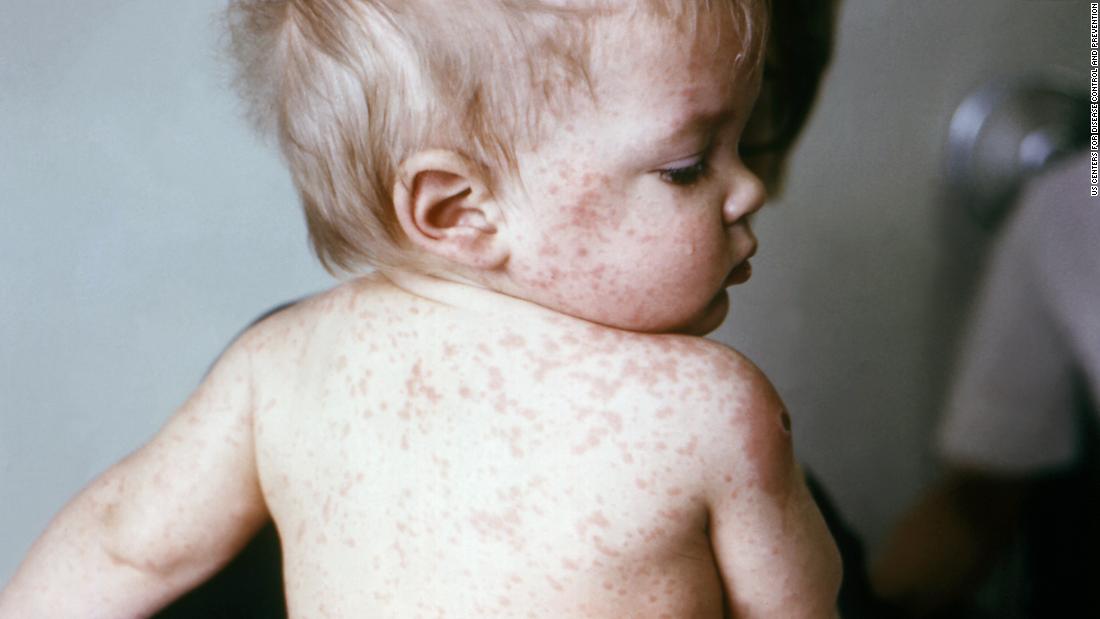Some of the infected children, 7 months to 4 years old, had complications, including hospitalizations, but there were no deaths. Three of the children were infected during a visit to Israel, where there is a large outbreak of the disease, the department said.
Last Sunday, the Israeli Ministry of Health had 1,334 measles patients, including a young child who died from the disease last week. The ministry estimates that the disease was imported by tourists and visitors who infected an unvaccinated population, mostly among the ultra-Orthodox Jewish communities in the country.
According to the US Centers for Disease Control and Prevention, measles is a highly contagious disease transmitted by sneezing and coughing, as well as through direct contact with an infected person. Symptoms include fever and rashes, which usually last for several days. Infected people are contagious four days before and four days after the onset of rash. Young children and pregnant women are among those most at risk of serious complications that can lead to death.
According to the CDC, one or two children will die from measles for 1,000 children with measles.
In Brooklyn, most children have probably contracted the infection at school, according to the Department of Health. Spokesperson Danielle De Souza wrote in an email that "14 of our 17 cases were not vaccinated at the time of exposure."
When a high percentage of the population is vaccinated, "collective immunity" will protect against the spread of the disease in unvaccinated or partially vaccinated persons, including infants. The CDC recommends measles, mumps and rubella vaccine (MMR) to all children at 12 months of age, with a second dose of 4 to 6 years.
The problem in the Brooklyn epidemic is delayed immunization or children who do not receive the MMR vaccine at 12 months, said De Souza: "This outbreak would not have occurred if the children had been vaccinated in time." However, she also noted that "globally in New York, our immunization coverage is high, as is compliance with school vaccination requirements."
The CDC also recommends that everyone, including infants aged 6 to 11 months, should be vaccinated before international travel.
Europe is also experiencing a rise
Europe also has a high number of measles cases, according to the European CDC. As of 5 October, most cases in the European Union had been reported in Romania (5,088 cases with 33 deaths), France (2,702 persons with 3 deaths), Greece (2,289 cases with 2 deaths) and Italy (2,248 cases with 6 deaths). Outbreaks continue to affect Greece, Ireland, Romania and Slovakia, according to the ECDC.
The Polish Ministry of Health reported 128 cases of measles this year to 15 October, a sharp increase over the 58 cases reported during the same period in 2017. The agency estimates that the outbreak has has been brought under control and that the country's population is properly vaccinated against the outbreak. disease.
Ukraine, which is not part of the European Union, is also experiencing an epidemic, with more than 31,000 cases reported in 2018, including 14 deaths. Serbia, which does not belong to the EU either, recorded 5,741 cases, including 15 deaths. An ongoing epidemic has also been reported in Russia.
In 2017, the European Region of the World Health Organization, which includes Russia, Serbia and Ukraine, reported more than 24,000 cases of measles, compared with just 5,000 in 2016. During in the first six months of 2018, more than 41,000 children and adults were vaccinated. infected with measles. WHO is concerned that low immunization rates may be at the root of the record number of measles cases in the European region.
In the United States, the CDC reported last month an increase in the number of unvaccinated children. Unvaccinated children under 2 years of age increased from 0.9% of those born in 2011 to 1.3% of those born in 2015, according to a report. In comparison, only 0.3% of children aged 19 to 35 months had received no vaccine doses in 2001.
"None of the cases in Brooklyn has for the moment caused any cases outside of Brooklyn," said De Souza. Meanwhile, the New York Department of Health raises awareness among Orthodox Jewish communities in Brooklyn by sending out notices to religious schools, posting newspaper ads, and distributing posters and literature on health care. In addition, health care providers and local hospitals were informed of the outbreak and vaccine doses were provided to doctors and clinics.
Between June 2009 and June 2010, the United States experienced an epidemic of mumps affecting 3,502 people, mostly students and most Orthodox Jews in New York, as well as in two northern counties. State and New Jersey County. During this outbreak, the majority of students with documented immunization status received both doses of the MMR vaccine. Health officials have suggested that intense face-to-face interactions in the classroom allow the spread of the disease.
Rabbi David Niederman, president of the United Jewish Organizations of Williamsburg and North Brooklyn, made it clear in a statement Friday that the Torah, the Old Testament that serves as a leading practice in Judaism, states that people must preserve their health. "The need for parents to ensure that their children are vaccinated, especially against measles, is clearly established."

